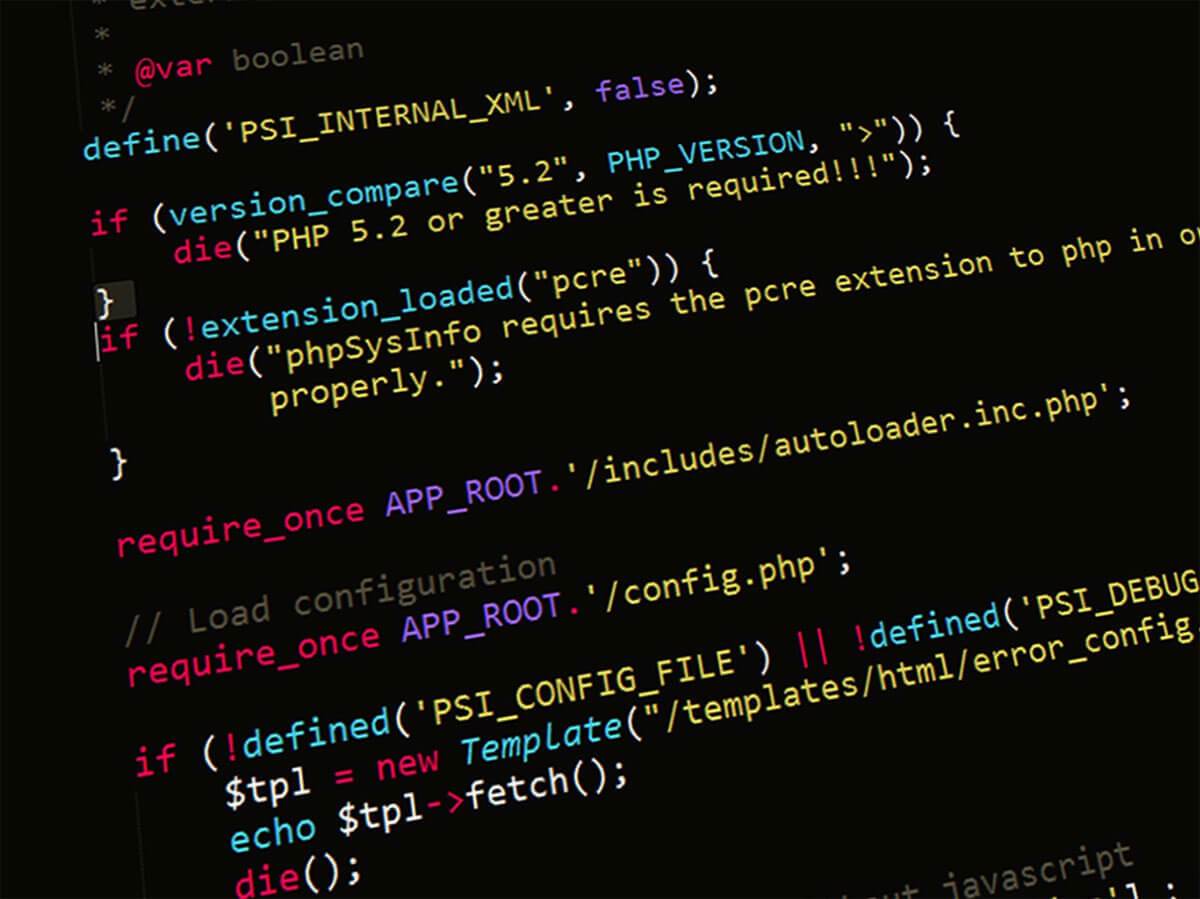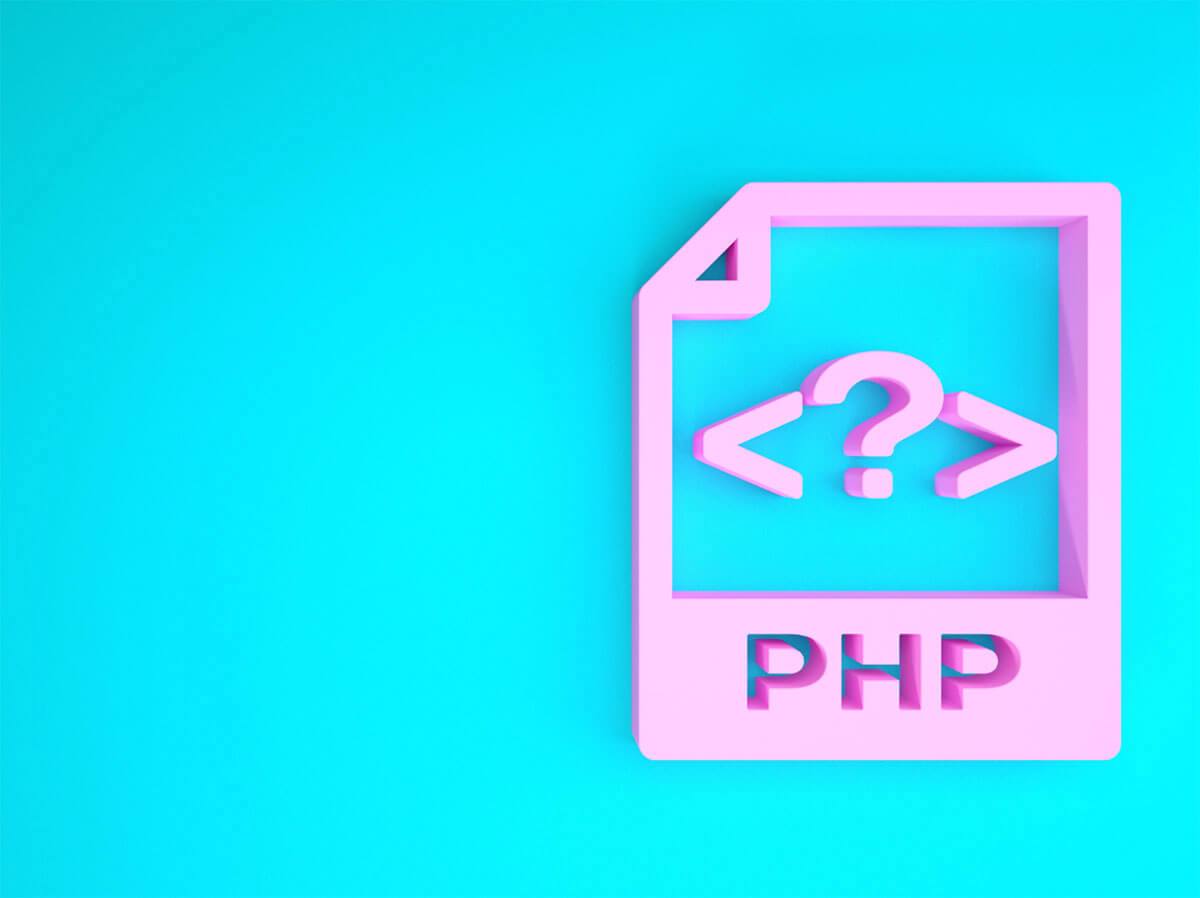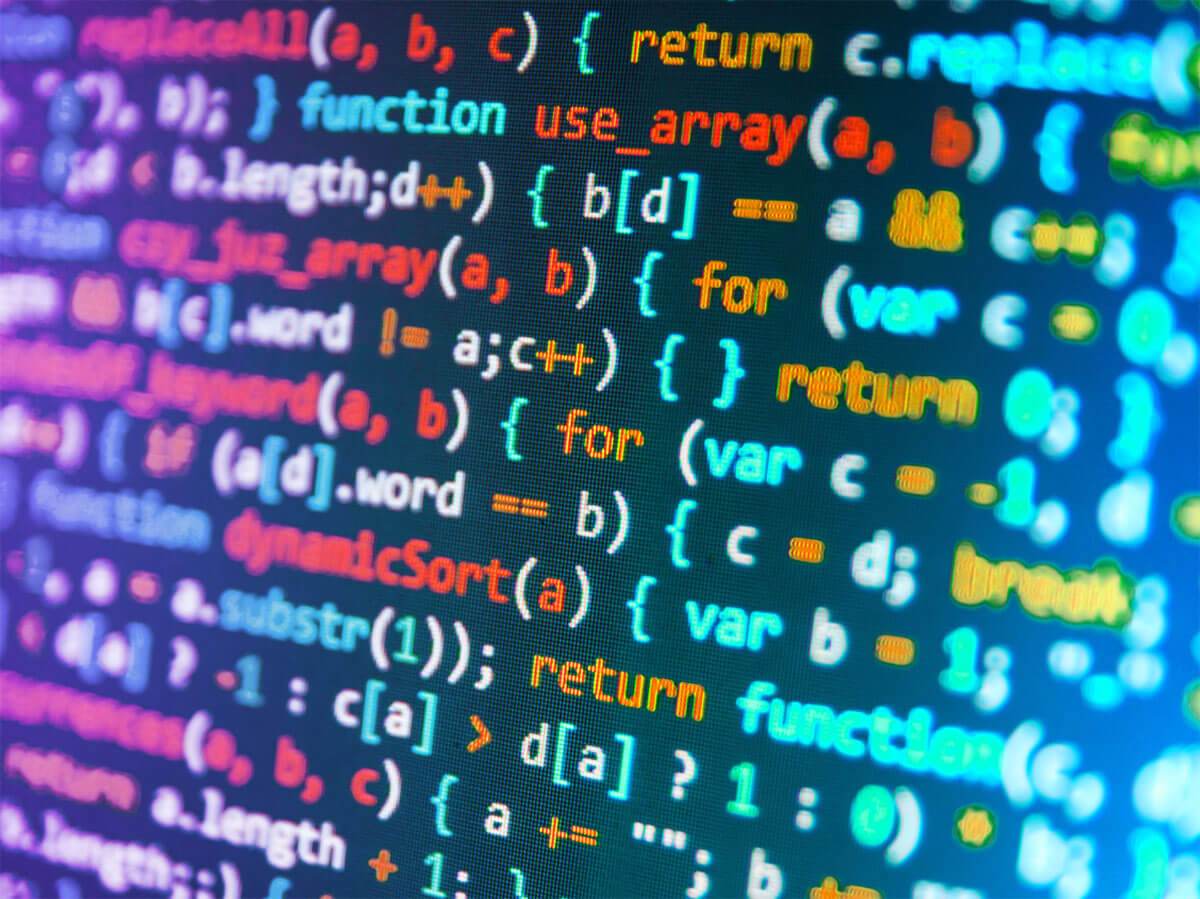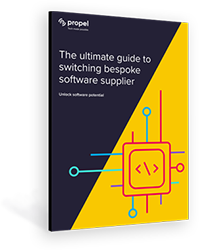What is PHP?
Learn everything you need to know about what PHP is, and what it is used for from the developers at Propel Tech. Explore why it is still so popular today.
PHP (recursive acronym for PHP: Hypertext Preprocessor) is an open-source, server-side scripting language used mainly for web development. It is a widely-used-general-purpose scripting language that can be embedded into HTML.
Instead of using lots of commands to output HTML, PHP allows developers to programmatically create HTML web pages and update databases. In this guide from the team at Propel Tech, we’ll cover everything PHP. You'll learn the fundamental aspects, advantages, and applications of PHP. From understanding its core functionality to uncovering why it’s still the most loved programming language.
Table of Contents
- Understanding PHP
- What is PHP used for?
- How does PHP work?
- Benefits and Advantages of Using PHP
- Final thoughts on PHP
- PHP Development at Propel Tech
Understanding PHP

PHP was created by Danish-Canadian programmer Rasmus Lerdorf in 1993 and released in 1995. Free to download and use, it is at the core of the biggest blogging software on the web: WordPress.
PHP is an open-source, general-purpose scripting language executed on the server. It is robust enough to run large social networks and is also easy enough to be a beginner’s first server-side language.
In the beginning, PHP was not intended to be a new programming language, and grew organically, which has led to inconsistent naming of functions and parameters. Born as an abbreviation of Personal Home Page, the acronym has changed as the language developed since its launch in 1994 to reflect its nature more accurately.
PHP can be embedded into HTML. This allows developers to create dynamic web pages and applications, remaining popular as it helps to simplify HTML code. PHP can also be used to create standalone applications, collect form data, control user access or send and receive cookies. With compatibility for all major operating systems, coding is simple no matter what technology you use.
What is PHP used for?

PHP programming is versatile and can be used to create most things a software developer needs. It particularly excels in three primary domains:
Server-side scripting
PHP excels in server-side scripting, making it a formidable strength. If you're a beginner in coding and wish to delve into server-side scripting, PHP is an excellent language to start with. To begin PHP server-side scripting, you'll require a PHP parser, a web server, and a web browser.
Command-line scripting
Command-line scripting is well-suited for creating scripts intended for use with cron (Linux) or Task Scheduler (Windows). It is also highly effective for straightforward text-processing tasks.
Web application development
PHP serves as a robust foundation for developing web applications, encompassing tasks such as storing, deleting, and modifying information in a database. This versatility makes it well-suited for creating a range of applications, including content management systems (CMS), customised online databases, eCommerce websites, gaming applications, and community portals.
How does PHP work?

PHP seamlessly integrates with databases, and its versatility in handling different web development tasks makes PHP a popular choice for building dynamic websites.
To understand PHP, it’s hugely beneficial to learn HTML first to get the most out of PHP. What sets PHP apart from client-side JavaScript is that its code is executed on the server side, generating HTML that is subsequently sent to the client. Although the client receives the outcomes of the executed script, it remains unaware of the underlying code. It's even possible to configure your web server to handle all HTML files using PHP, ensuring users are unable to discern the intricacies of your implementation.
PHP Files
PHP files can incorporate text, HTML, CSS, JavaScript, and PHP code. The execution of PHP code occurs on the server, and the resultant output is then delivered to the browser as standard HTML. PHP files are identified by the ".php" extension.
Server-Client Interaction
The PHP code generates HTML, which is then sent as the final output to the user's browser. Despite receiving the executed script's results, the client remains oblivious to the underlying PHP code, adding a layer of security and abstraction.
Procedural Programming
PHP provides the flexibility to choose both the operating system and the web server of your preference. Additionally, you have the freedom to opt for procedural programming, object-oriented programming (OOP), or a combination of both methodologies.
PHP Vs HTML
PHP offers more than just HTML output; its abilities extend to generating diverse file types like images or PDFs, encrypting data, and sending emails. It seamlessly handles various text formats, such as JSON or XML, and can automatically create and store these files in the file system. This functionality serves as a server-side cache, enhancing the management of dynamic content.
Objective Oriented
PHP incorporates object-oriented programming (OOP) features such as data encapsulation, inheritance, abstraction, polymorphism, and more. The inclusion of object-oriented programming was introduced in PHP5, enabling the development of intricate and reusable web pages. This enhancement positions PHP as a robust and comparable language to other powerful object-oriented languages like Java and Python.
Fast Performance
PHP scripts are usually faster compared to other scripting languages, resulting in quicker loading times for web pages, a feature appreciated by users. The speed advantage of PHP arises from its execution within its dedicated memory space. Furthermore, PHP exhibits swift and efficient database connectivity, contributing to its overall performance efficiency.
Benefits and advantages of PHP
Cross-platform
PHP runs on major operating systems, reducing any compatibility issues. This ensures seamless collaboration within a project team, as members can access the code without any worries about system restrictions.
Open-source and Free
PHP is a freely available programming language. The longevity of PHP has cultivated a large community of developers. This community not only provides support but also offers a wealth of legacy code to help start new projects, with many resources available for learning the language.
Easy to learn and use
Because of its simplicity, PHP is quicker and more straightforward to learn than some other alternatives, with a syntax that is easy to understand. This makes it easy for beginners to start coding in PHP quickly.
Great load times
As website performance becomes more and more tied to speed, PHP's quick load can significantly contribute to your success.
Final thoughts: what is PHP?
PHP stands as a dynamic and versatile server-side scripting language that has played a pivotal role in shaping the landscape of web development. Its ability to integrate with HTML, process forms, and interact with databases has made it a keystone for creating dynamic web applications.
PHP’s support for object-oriented programming features and its compatibility with different operating systems and web servers showcase its adaptability and scalability. Used for Web content management systems including WordPress, Joomla and Drupal, PHP was used in more than 240 million websites.
PHP, backed by many users and volunteers across the globe who have contributed to many features and versions of PHP libraries, has become one of the most widely used languages for web development.
Looking ahead, PHP remains one of the most popular server-side programming languages and is used for a variety of web development projects, making it fundamental in server-side scripting.
PHP development at Propel Tech

At Propel Tech, we provide a wide range of software development services. We work across a range of technology stacks, and our expertise is tailored to meet diverse business needs.
From conceptualisation to deployment and ongoing maintenance, we offer end-to-end software development services. We ensure seamless experiences and high-quality outcomes.
Work with Propel Tech for software development.
FAQs
Is PHP backend or frontend?
PHP is classified as a backend scripting language. When a request for a PHP page is made, the server interprets and processes the PHP code, often leading to the dynamic generation of HTML content. While PHP can be embedded within HTML to generate dynamic content that is sent to the front end, its primary role is in the backend, where it executes on the server to fulfil various server-side functionalities.
Why is PHP called a scripting language?
PHP functions as a server-side language, since it requires a server for code execution. The PHP code is processed on the server, and the outcome of this execution is then sent back to the browser. This attribute classifies PHP as both a scripting language and a server-side language. Scripting languages are often used for tasks like automating repetitive processes, handling dynamic content on websites, and performing various server-side operations.
Is PHP still relevant?
Yes, as of 2024, PHP remains a relevant and prominent choice for constructing websites. It continues to be among the most favoured programming languages for web development, maintaining its widespread utilisation by developers globally.
eBook
Make successful provider migrations a possibility. Download our essential free guide.
Find out more
Your partners in possibilities
As experts across existing and new technologies, we don’t simply solve software problems, we find solutions that help manage change so that your business thrives and grows.
We’re eager to hear about your project goals and turn them into reality. Get a free consultation to make tech possible.
Brief us




